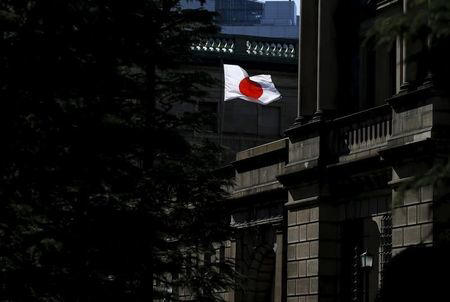On Wednesday, the Bank of Japan (BOJ) implemented a significant policy change by raising its benchmark short-term interest rate by 15 basis points, setting it within the range of 0.1% to 0.25%. This marks a pivotal shift in the BOJ’s long-standing ultra-dovish monetary policy, which has included years of quantitative easing (QE) measures aimed at stimulating economic growth and combating deflation. Market expectations had been divided, with forecasts ranging from maintaining the current rate to a modest increase of 10-15 basis points. The BOJ’s decision to raise rates underscores its intent to gradually normalize monetary policy as the economic landscape evolves.
In addition to the rate hike, the BOJ announced a plan to reduce its monthly bond purchases. Currently, the BOJ buys Japanese Government Bonds (JGBs) at a pace of 6 trillion yen per month. By early 2026, the central bank intends to cut this pace to 3 trillion yen (about $19.59 billion), reducing its JGB purchases by 400 billion yen each quarter. This adjustment reflects the BOJ’s strategic move to taper its QE measures, aligning with broader market expectations and signaling a transition towards more conventional monetary policy.
Economic Projections and Inflation Expectations
The BOJ’s decision comes amid evolving economic conditions in Japan. During its June meeting, the central bank had already indicated a shift away from its ultra-loose monetary stance. Recent revisions to the BOJ’s economic forecasts provide a nuanced view of Japan’s economic prospects:
- Growth Outlook: The BOJ lowered its forecast for real GDP growth in fiscal 2024 to 0.6% from the previously projected 0.8%. This downward adjustment reflects concerns about the potential impact of global economic uncertainties on Japan’s economic performance.
- Inflation Projections: The forecast for core consumer price index (CPI) inflation for the current year was revised down to 2.5% from 2.8%. This adjustment indicates a more cautious view of inflationary pressures in the near term. However, the BOJ slightly increased its inflation forecast for 2025, projecting core CPI at 2.1% compared to the previous forecast of 1.9%. This suggests some confidence in longer-term inflation trends despite current challenges.
The BOJ’s approach reflects a balancing act between addressing immediate economic challenges and preparing for future inflationary pressures. The revised forecasts highlight the central bank’s cautious optimism and its commitment to maintaining economic stability.
Market Reactions and Yen Performance
Following the BOJ’s announcement, the Japanese yen experienced a modest depreciation. The USDJPY exchange rate increased by 0.3%, indicating a reaction to the BOJ’s extended timeline for reducing QE measures and its cautious near-term economic outlook. The yen’s weakness reflects some disappointment among traders who had anticipated a more aggressive policy shift or a quicker end to the BOJ’s accommodative measures.
The reaction in currency markets underscores the complex dynamics between monetary policy adjustments and market expectations. The yen’s performance is closely tied to investor sentiment and perceptions of the BOJ’s policy trajectory.
Economic Indicators and Current Conditions
The BOJ’s rate hike and QE adjustment occur against the backdrop of mixed economic indicators in Japan:
- Consumer Spending: Recent data shows an improvement in consumer spending, driven by stronger wages. This positive trend supports the BOJ’s forecast that inflation will sustainably reach its 2% annual target, justifying the need for tighter monetary conditions.
- Retail Sales and Industrial Production: Data released on Wednesday revealed that retail sales in Japan for June surpassed expectations, while industrial production contracted less than anticipated. These indicators suggest some resilience in the Japanese economy despite ongoing challenges.
- Economic Contraction: The Japanese economy experienced a sharp contraction in the first quarter of 2024, raising concerns about the BOJ’s ability to tighten policy further. This contraction highlights the ongoing economic uncertainties that the BOJ must navigate.
Historical Context and Policy Shifts
The BOJ’s rate hike is notable as it marks the first increase in 17 years. In March 2024, the BOJ had already made a significant move by raising rates into positive territory for the first time in nearly a decade. This decision was driven by improving inflation and economic conditions but was accompanied by a cautious approach given the ongoing economic uncertainties.
The gradual reduction in QE measures and the rate hike reflect the BOJ’s broader strategy to normalize monetary policy while balancing the need for economic support with the imperative to address inflationary pressures.
Conclusion
The Bank of Japan’s recent policy actions represent a critical shift from its long-standing ultra-dovish stance. The 15 basis point rate hike and the planned reduction in bond purchases signal a gradual move towards policy normalization. While these actions align with improving economic indicators and inflation targets, they also reflect the BOJ’s cautious approach given the prevailing economic uncertainties.
The market reaction, including the yen’s depreciation, highlights the complexities of implementing monetary policy in a volatile economic environment. As Japan continues to navigate these challenges, the BOJ’s future policy decisions will be closely scrutinized for their impact on both domestic and global financial markets.
